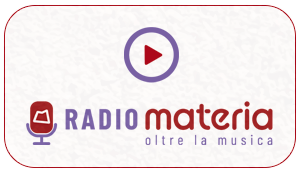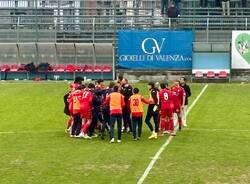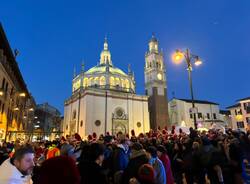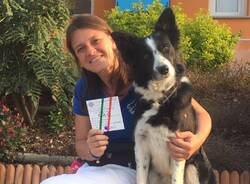From Boston to Gallarate: the lyceum becomes a High School
Two students from MIT have become teachers at the scientific lyceum in Viale dei Tigli, and have made physics, mathematics and science an exhilarating experience
 Over the last days, the Scientific Lyceum in Gallarate has had two very particular teachers, Joan Chen and Ritu Tandon (see photo). Despite the fact they are still very young, Joan and Ritu are really brilliant in their subjects. They are students from the Massachusetts Institute of Technology (MIT), the American university that is considered the temple of technology and of innovation, that selects only the best students in the country. The lessons given by these new teachers, who are “on loan”, are enthralling; they almost always take place in the laboratory and, even though the subjects are explained in English, it seems that mathematics, physics and science have become much more “digestible”. Explaining friction is less boring if you use a ball and a piece of wooden, which are definitely more realistic than a crooked drawing on the whiteboard. The same is true for the elastic force; why not test it playing with springs, to make the formulae more real and easier to remember?
Over the last days, the Scientific Lyceum in Gallarate has had two very particular teachers, Joan Chen and Ritu Tandon (see photo). Despite the fact they are still very young, Joan and Ritu are really brilliant in their subjects. They are students from the Massachusetts Institute of Technology (MIT), the American university that is considered the temple of technology and of innovation, that selects only the best students in the country. The lessons given by these new teachers, who are “on loan”, are enthralling; they almost always take place in the laboratory and, even though the subjects are explained in English, it seems that mathematics, physics and science have become much more “digestible”. Explaining friction is less boring if you use a ball and a piece of wooden, which are definitely more realistic than a crooked drawing on the whiteboard. The same is true for the elastic force; why not test it playing with springs, to make the formulae more real and easier to remember?
Students at the Lyceum in Gallarate might not know, but these 32 classes (each receiving a lesson of about two hours) are part of a big experiment. In 2007, MIT finished developing the hands on approach to teaching, which is very “American”. The hands on approach is based primarily on experimenting in the laboratory, and it has been very successful in the schools in Boston. Now, MIT is seeking to discover how exportable it is, and so, is testing it in very carefully selected schools in China, Germany, France, Mexico and Italy. This year, in Italy, the schools taking part in this project are the Lyceum in Gallarate, the “Pacioli” Technical and Commercial Institute in Crema, the “San Carlo” Scientific Lyceum in Milan and the “Tosi” Technical and Commercial Institute in Busto Arsizio.
Joan and Ritu have almost finished their three-week experience in Italy, and they now have an accurate idea of our teaching method and of the different needs of Italian students. Ritu explained, “The most important difference is that, here, there are different types of high school, those with a scientific slant, those with a technical slant, and so on … so the students study more subjects at the same time, whereas, in the United States, every year they study fewer subjects, with greater personalisation. So, here in Italy, the high schools concentrate more on a specific type of school career, whereas in Boston, there’s greater freedom to create your own profile.” Another difference, they said, is in the type of teaching, which is more interactive than the traditional, frontal approach. “In America, the scientific subjects have a larger experimental component,” explained Joan. “For example, chemistry lessons are given almost exclusively in the laboratory, with experiments and activities. But here, the theoretical approach is stronger.”
Of course, there are different traditions and teaching systems in every country, so the comments of the MIT students should be considered more of an analysis than a criticism. “We don’t think that our system is better or worse,” they explained, “it’s just different. We were talking with other young people some time ago, and they agreed with us; in certain respects, they think the Italian system caters for their needs better, for example, they prefer to be able to stay together in the same class every day for five years, and, therefore, bond more with each other. At the same time, I think it’s nice to have the freedom to study the subjects that interest us in more detail, and to meet different people in each course.”
Of course, an experimental approach is going to succeed more in attracting the attention of students, who are all too accustomed to receiving numerous stimuli from the Internet, and are always in danger of being distracted during the traditional frontal lessons. This is confirmed by Greta and Francesca, two students in the second year at the Lyceum in Gallarate. “Having lessons with this new method has been fun,” they say. “We’ve also learnt complex topics, like osmosis, doing experiments that caught out attention.”
In short, in only two weeks, these MIT students have brought a breath of fresh air into the Lyceum in Viale dei Tigli, as well as some new ideas to inspire the teachers, one of whom is the physics teacher Maria Rola, who, after attending a number of lessons in the high schools in Boston, and at MIT, has now carefully watched the teaching method of the two American students. “Of course, here, at the lyceum, we are very proud of the Italian teaching method, and we think we can bring students up to very high levels,” Ms Rola explained. “But there are many interesting things that we could incorporate into our approach. I’d like to take some ideas to make activities more laboratory-based; fortunately, we don’t need large laboratories, and with a bit of imagination, we can prepare simple experiences with simple materials. I’d also like to improve group working; I think that here, in Italy, we use group activities little, but they can involve the students more.”
Things have changed in the Italian school system over the last few years. Also architecturally; you need only wander along the corridors of the Lyceum in Gallarate to get an idea; light blue lockers have appeared outside classrooms, greatly resembling High School Musical. The laboratories are always packed, although the students still spend most of the lesson at the same bench, in the same classes. Thanks to films and television series, students now know about (and, in some cases, envy) the American school system. Some of them might even start thinking of studying abroad, as they no longer fear the language barrier. “In the United States, teachers remain in their laboratories, which they personalise with time, and this makes them increasingly ‘alive’,” said Ms Rola. This could already be a good idea to implement.
Of course, it does not mean that we should try to be like the Americans, or that we should revolutionise the Italian school system. It only means taking ideas from a situation in which, we have to say, scientific subjects are less frightening and attract many more students. Seeing students enjoying themselves during a chemistry lesson, one in English, to boot, sounds incredible. But in fact, it is only the result of cultural exchange, an experience that can never start too soon.
La community di VareseNews
Loro ne fanno già parte
Ultimi commenti
PaoloFilterfree su Martelli: "Sovranisti a parole, genuflessi nella realtà. Così l’Italia si perde"
MarcoCx su Incendio nella notte in una fabbrica a Groppello di Gavirate, decine di uomini impegnati
Felice su Martelli: "Sovranisti a parole, genuflessi nella realtà. Così l’Italia si perde"
Giuseppe Mantica su Concerto di Santa Cecilia: La Casoratese celebra la musica in un viaggio nel tempo e nel mondo attraversando culture diverse
Claudio Pilotti su Il disastro del Campo dei fiori finalista con ANSO al premio AICA con il progetto «Scrivo da un paese che non esiste»
Felice su In 15 anni calano del 50% le nascite nell’alto Varesotto: un convegno per ripensare l’infanzia e la genitorialità
















Accedi o registrati per commentare questo articolo.
L'email è richiesta ma non verrà mostrata ai visitatori. Il contenuto di questo commento esprime il pensiero dell'autore e non rappresenta la linea editoriale di VareseNews.it, che rimane autonoma e indipendente. I messaggi inclusi nei commenti non sono testi giornalistici, ma post inviati dai singoli lettori che possono essere automaticamente pubblicati senza filtro preventivo. I commenti che includano uno o più link a siti esterni verranno rimossi in automatico dal sistema.